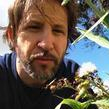Ants as Partners and Hosts
A special issue of Insects (ISSN 2075-4450).
Deadline for manuscript submissions: closed (1 June 2020) | Viewed by 14480
Special Issue Editors
Interests: behavioural ecology and sociobiology, biology of ants (Hymenoptera, Formicidae) and other insects studied with a multidisciplinary approach (behavioural, morpho-functional, ecological and evolutionary)
Interests: ethology; behavioural ecology; mutualism; social immunity; ant-plant relationships; ants as a tool in robotics and swarm intelligence
Special Issue Information
Dear Colleagues,
The numerical dominance and ecological ubiquity of ants have led them to interact with many different organisms co-existing in the same biotope, thereby leading to an exceptionally wide range of relationships— from mutualistic to detrimental ones.
The complexity of their social organization allows the ants to control their physical environment, to overcome competitors and to exploit resources in an efficient way. This makes the ants an ideal partner for developing mutualistic relationships. On the other side, the same properties, as well as their ubiquity and the increased sanitary risks associated to their social life, make the ants a suitable target for parasites and pathogens, at different levels of the biological organization, from the individual to the superorganism.
Ants can thus establish a complex network of interactions with virtually every biotic component of their ecosystems, ranging from microorganisms to fungi, and from other animals to plants. This Special Issue will include original research articles and reviews by leading research entomologists and associated experts. Articles will focus on the latest developments in the study of interactions involving ants as partners or hosts of other organisms, from parasitism and opportunism to occasional mutualism and obligate symbiosis.
We feel this topic may be of general interest since interactions among organisms, even belonging to different kingdoms, are receiving increasing attention both for their ecological implications and as an interpretative tool in evolutionary and behavioural biology, genetics, immunology, development and physiology.
Prof. Donato Antonio Grasso
Prof. Claire Detrain
Guest Editors
Manuscript Submission Information
Manuscripts should be submitted online at www.mdpi.com by registering and logging in to this website. Once you are registered, click here to go to the submission form. Manuscripts can be submitted until the deadline. All submissions that pass pre-check are peer-reviewed. Accepted papers will be published continuously in the journal (as soon as accepted) and will be listed together on the special issue website. Research articles, review articles as well as short communications are invited. For planned papers, a title and short abstract (about 100 words) can be sent to the Editorial Office for announcement on this website.
Submitted manuscripts should not have been published previously, nor be under consideration for publication elsewhere (except conference proceedings papers). All manuscripts are thoroughly refereed through a single-blind peer-review process. A guide for authors and other relevant information for submission of manuscripts is available on the Instructions for Authors page. Insects is an international peer-reviewed open access monthly journal published by MDPI.
Please visit the Instructions for Authors page before submitting a manuscript. The Article Processing Charge (APC) for publication in this open access journal is 2600 CHF (Swiss Francs). Submitted papers should be well formatted and use good English. Authors may use MDPI's English editing service prior to publication or during author revisions.
Keywords
- behavioural ecology
- ants
- parasitism
- opportunism
- mutualism
- symbiosis







